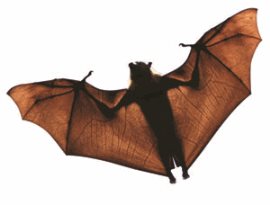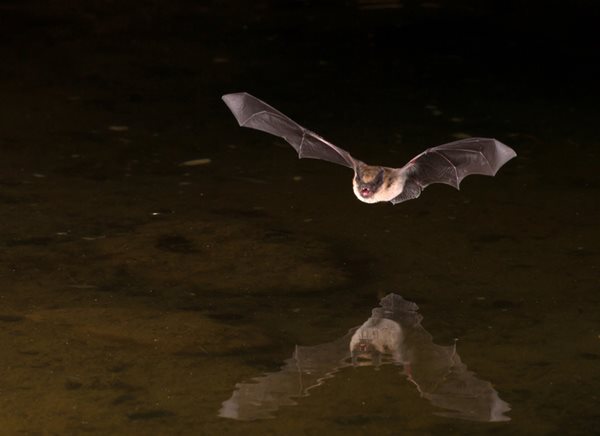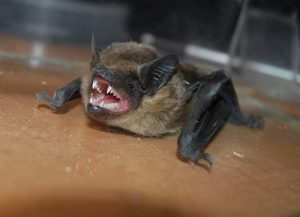Worried you have a bat infestation?
Critter Control Near YouHow To Identify Different Types of Bats
Bats are the only flying mammal. They have fur on their torso and sometimes fur-covered heads. Bat wings do not have fur. Their pronounced wings are scalloped at the bottom and mimic the appearance of an old-fashioned umbrella’s lower edge. These wings are hairless and protected by rubbery, leathery skin. Bats come in several colors, including black, brown, red, tan, and gray. In general, they have short snouts, large ears like a rodent, and fur-covered torsos. The smallest bats are roughly three inches long with an eight-inch wing span, while the largest may reach seven inches long with a wingspan two feet across.

Bats Live in More than Caves
Bats are frequently seen swooping through the air at dusk in search of insects to eat. One bat can eat as many as 500 in a single hour, and almost 3,000 every night. These sojourns frequently lead them to residential areas, where bats disturb people with their presence. As nocturnal creatures in need of a place to rest during the day, they sometimes end up living in attics. Because small gaps less than a half-inch wide will suffice, eaves and rooflines are popular targets.
More Bats, More Problems
The trouble with bats is that a group of them can quickly fill an attic with droppings, called guano. Not only can this can begin to stain the outside walls of homes, but it carries several health risks. When inhaled, bat guano dust can infect the lungs of victims or cause respiratory problems in people with asthma. Bats also carry rabies, which is fatal in humans if treatment doesn’t begin before symptoms present. To keep houses bat-free, homeowners are encouraged to call the wildlife removal professionals at Critter Control.
Bat Images


Learn more about bat removal.
Get them out.
Keep them out.®
Experiencing a wildlife or pest issue? We can help! Complete this form and your local Critter Control® office will contact you to assist.
- Baby Bats
- Bat Bites
- Bat Facts & Myths
- Bat Guano – Identification & Removal
- Bat Maternity Season
- Bat Noises and Sounds
- Bats & Rabies
- Watch How Bat Removal Works
- What to Do if Bats in Homes
- Bats in Chimneys
- Bats in Roofs
- Bats in the Attic
- Bats in Trees
- Bats in Walls
- Dead Bats
- Bat Diet & Feeding Schedule
- Do Bat Deterrents Work?
- How to Get Rid of Bats in Attic
- Is bat exterminating legal?
- Do Bats Hibernate?
- Types of Bats
- Bat Habitats and Infestations
- Bat Blindness & Echolocation